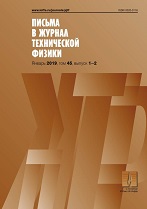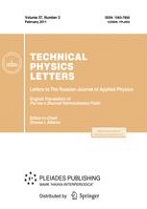|
This article is cited in 1 scientific paper (total in 1 paper)
Structural changes in Si–CuSi films upon intercalation of lithium ions
È. Yu. Buchina, A. A. Mironenkoa, V. V. Naumova, A. S. Rudyia, I. S. Fedorovb
a Valiev Institute of Physics and Technology, Yaroslavl Branch, Russian Academy of Sciences, Yaroslavl, Russia
b P.G. Demidov Yaroslavl State University
Abstract:
We studied the possibility of using composite films representing amorphous silicon reinforced with crystalline inclusions of copper silicide as an anode material for lithium-ion batteries with liquid electrolyte. The films were made by layer-by-layer magnetron sputtering of amorphous silicon and copper, followed by low-temperature (100–200$^\circ$C) annealing of the structure. The tests of the anodes revealed the effect of prolonged intense growth of their reversible capacity. To describe the effect, a phenomenological model based on the multidirectional migration of silicon and copper atoms in an inhomogeneous field of elastic mechanical stresses arising during electrode cycling is proposed.
Keywords:
nanocomposite film, capacitive profile, vacancy voids, gradient of elastic stresses, atomic migration.
Received: 05.06.2019
Revised: 18.06.2019
Accepted: 18.06.2019
Citation:
È. Yu. Buchin, A. A. Mironenko, V. V. Naumov, A. S. Rudyi, I. S. Fedorov, “Structural changes in Si–CuSi films upon intercalation of lithium ions”, Pisma v Zhurnal Tekhnicheskoi Fiziki, 45:19 (2019), 17–20; Tech. Phys. Lett., 45:10 (2019), 973–976
Linking options:
https://www.mathnet.ru/eng/pjtf5303 https://www.mathnet.ru/eng/pjtf/v45/i19/p17
|


| Statistics & downloads: |
| Abstract page: | 54 | | Full-text PDF : | 24 |
|





 Contact us:
Contact us: Terms of Use
Terms of Use
 Registration to the website
Registration to the website Logotypes
Logotypes








 Citation in format
Citation in format 
